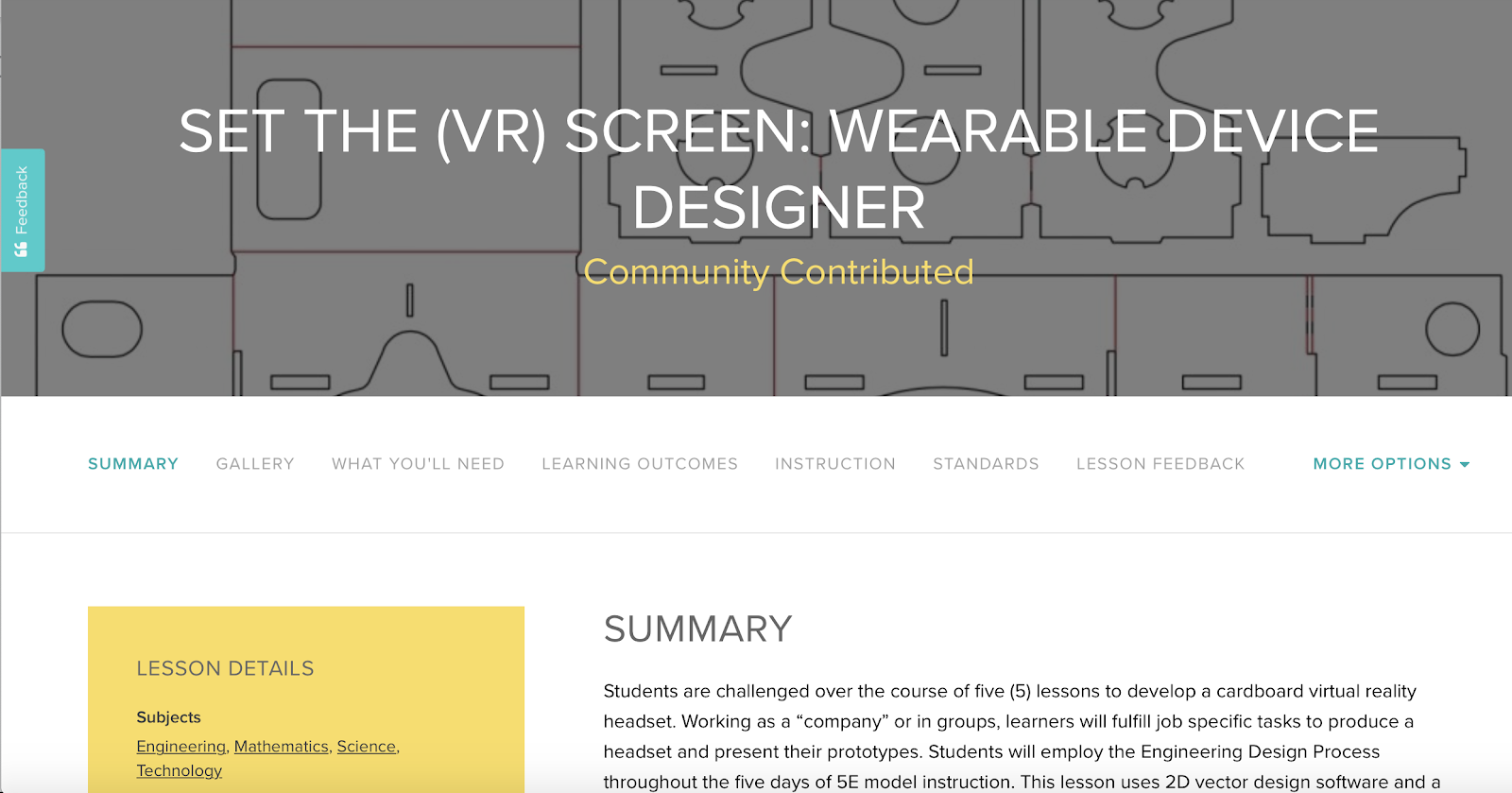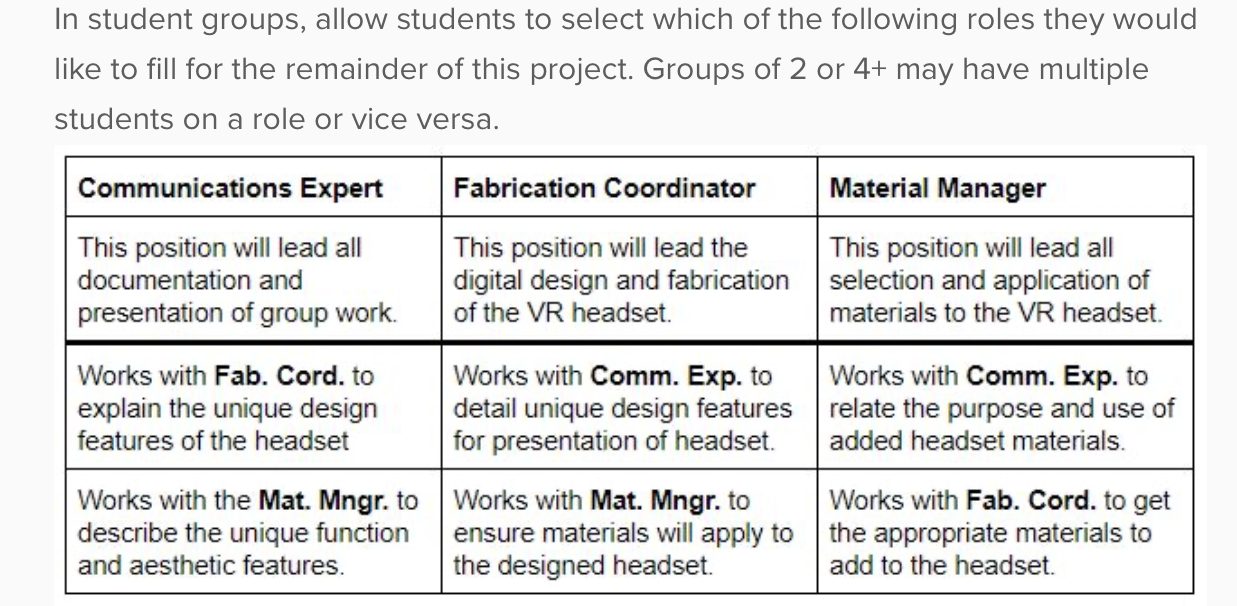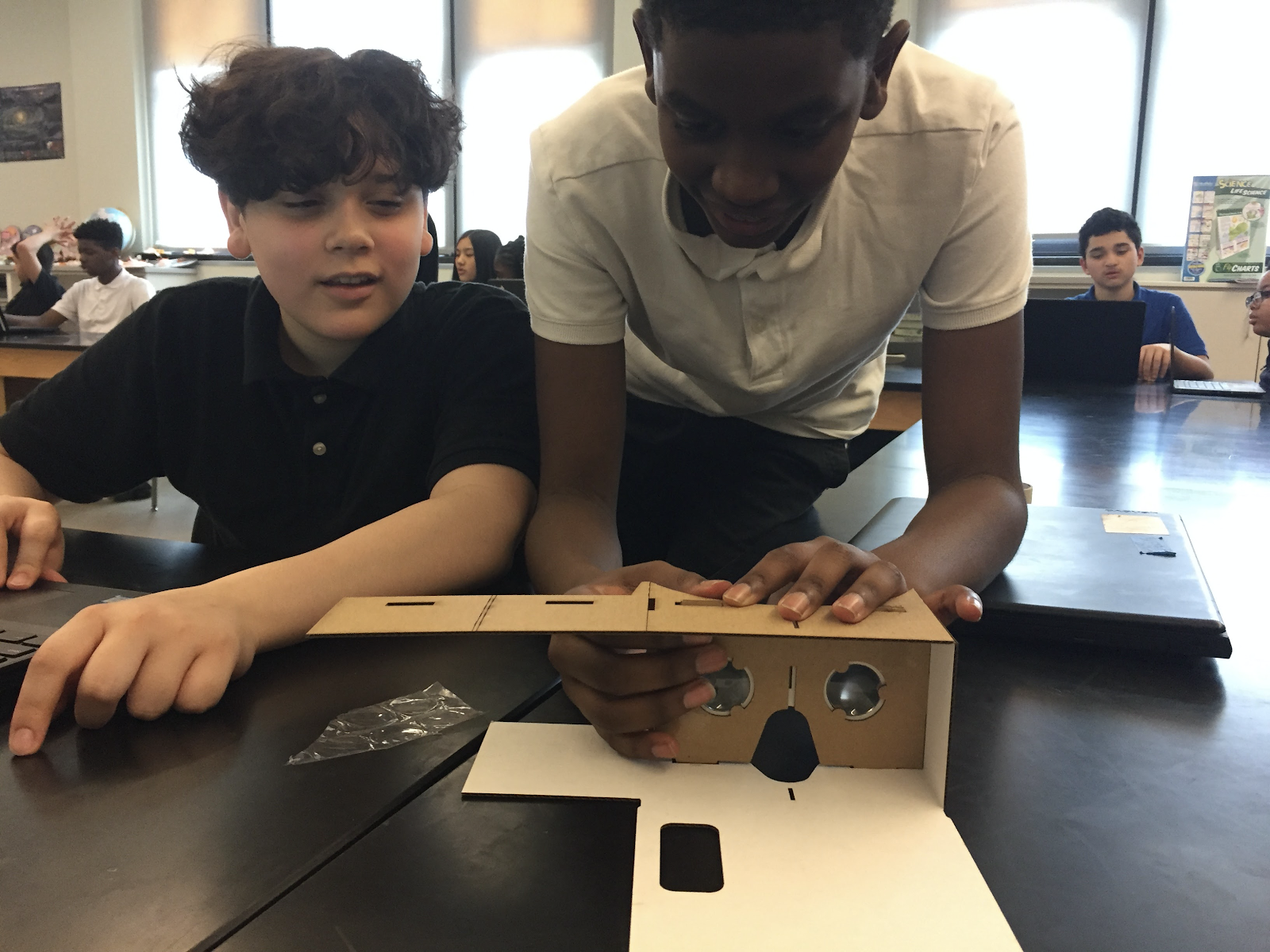Desmond Hearne Morrey is an intern at the Fab Foundation. His role includes reviewing and featuring SCOPES-DF lessons for the community blog. To read his earlier piece, click here.
Hey everyone, I’m back with a second post to talk about collaborative work in digital fabrication lessons. Collaboration across fields is essential in most STEM careers. For instance, look at how most major tech companies are structured: researchers, programmers, and designers all collaborate and influence each other’s work. So why are so many STEM classes taught like competitions with high-stakes testing and grading systems that resemble zero sum games? Here, I’ll showcase one lesson that frames group-work nicely and, later, discuss methods that educators could incorporate to promote collaborative learning into their next lesson.
Lesson Spotlight: Set the (VR) Screen: Wearable Device Designer by Aidan Mullaney
Aidan Mullaney’s lesson, Set the (VR) Screen: Wearable Device Designer, is one of the few on SCOPES-DF that features group work as an integral part of the lesson. The idea is that students form small groups of 2-4 and act as a team to design their own VR headset company. The lesson is structured in an entrepreneurial fashion, with each student playing a different role in the simulated start-up.

Aidan’s model of group work is effective for a few reasons. To start, each student has predefined tasks. It gives kids the opportunity to practice their collaboration skills, which are arguably more important than any technical skill. Aidan’s model also makes dividing tasks among the group a matter of lesson design, rather than leaving it to the group itself. For some educators, there’s a concern that some number of students won’t do their share of work, or that some students will dominate the project. However, in Aidan’s lesson, the group is structured to preempt this problem and the work is divided evenly among group members.

Also included in Aidan’s lesson is a portion at the end where students present their headset design to the class. He uses this space to further the entrepreneurial theme of the lesson with an auction and elevator pitch. I could also see other lessons including this collective wrap-up as a space to discuss challenges and successes in the design process for engineering lessons. Alternatively, it could be a space to allow students to ask further questions about the material in science lessons, or to collectively explore the consequences of new theorems in math lessons. Building collaborative components into the lesson allows students to build curiosity, discuss what they’ve learned (or what they still don’t understand), and help them connect with other students.
Take your lesson to the next level: “Congressive” Lesson Design
In X+Y, Eugenia Cheng’s book on gender discrimination and prejudice in mathematics, she coins the terms “ingressive” and “congressive”. She describes “the etymological idea [being] that ‘ingressive’ is about going into things and ‘congressive’ is about bringing things together.” Cheng asserts that much of mathematics education and, in fact, much of society in general is built to favor ingressiveness – competitiveness, adversarialism, and individualism. However, Cheng then shows how congressiveness – collaboration, interdependence, and cooperation – is actually more beneficial to things like research, education, and society. Knowledge, it turns out, is one of the things that grows when you share it.

Many traditional STEM classes function as a zero sum game. Everyone can’t get an A, because then the test would be deemed by some as “too easy” and the difficulty would be increased, creating an artificial scarcity of academic success. Group work and collective discussion give students the potential to create together, connect with each other’s interests, and build on each other’s knowledge and curiosities. It eliminates or lessens the competitive and exclusionary aspects of STEM education by bringing students into a discursive space instead of positioning students as isolated and in competition. It changes learning from an artificial zero sum game, to an authentic, infinite one.
With this in mind, I’m always on the lookout for congressive lesson design when I’m browsing SCOPES-DF. Are teachers having students work alone or in groups? Are they framing the project as a competition or a collaboration? Are decisions made authoritatively or collectively? Collaboration, discussion, and teamwork is missing in a lot of STEM education right now.
Final Thoughts
I see an opportunity in a lot of SCOPES-DF lessons to incorporate more congressive lesson design. Many lessons are centered around a project, which students are often made to do individually, both limiting the scope of the project and missing an opportunity to have students work together. While things like tests are inherently designed such that students have to do them on their own, project based learning has the opportunity to bring students together around shared work and interests. So, next time you’re putting a lesson on SCOPES-DF, give some thought to whether the lesson ought to include a collaborative element and whether you want to frame learning as a competition or a collaboration.
Tagged: 100, Desmond Hearne Morrey, Featured Lesson, One hundred, Virtual Reality, VR
